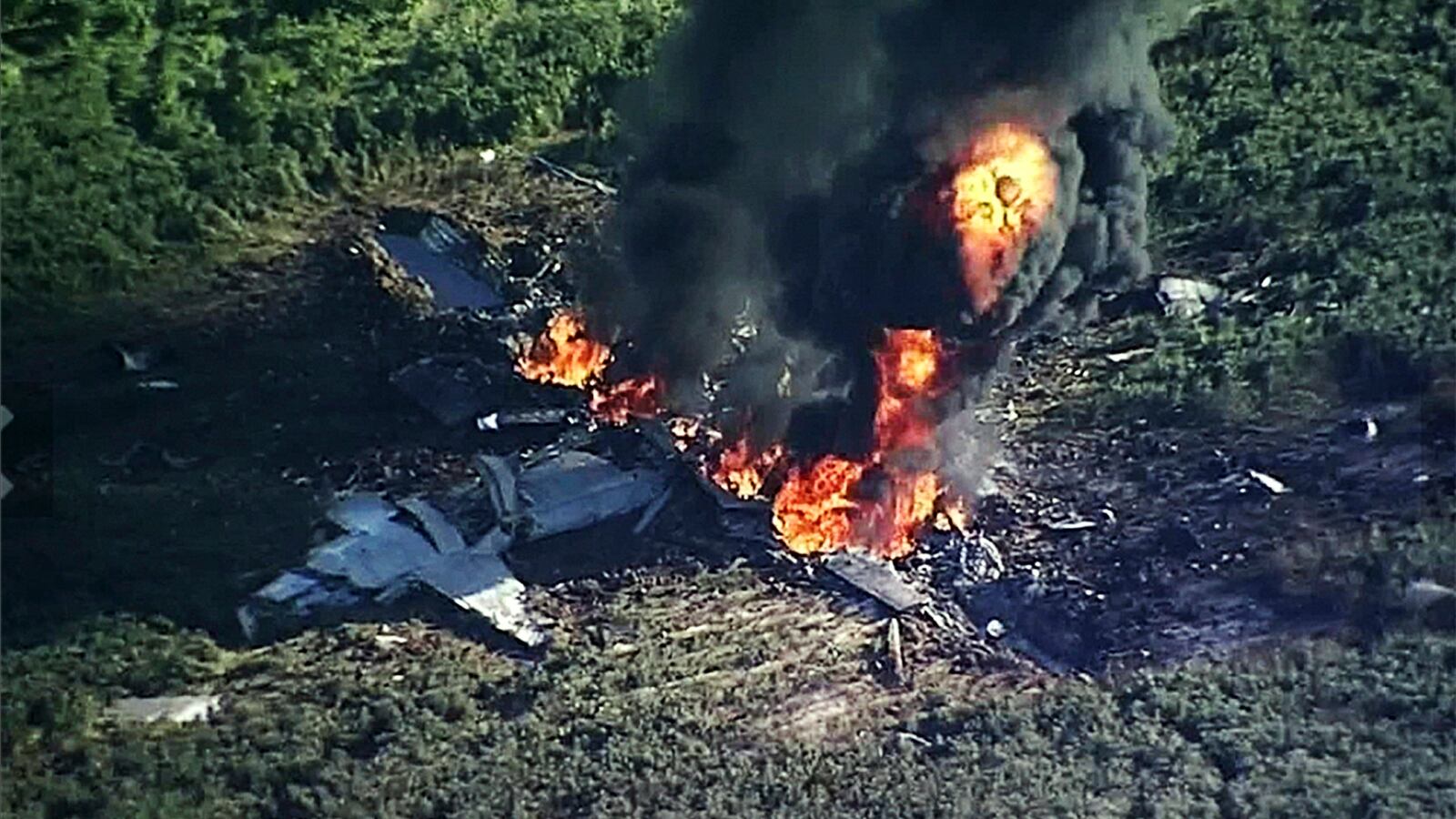It could be weeks or months before investigators can say for sure what went wrong in the moments before a U.S. Marine Corps refueling plane crashed Monday evening, but the Marines’ flying squadrons were in bad shape well before the accident.
The four-engine KC-130T that plummeted to the ground in rural Leflore County, Mississippi, killing all 16 people aboard, was a 1980s-vintage refueler. Back-to-back war deployments and years of funding shortfalls—largely the result of “sequestration” budget cuts—have worn out airplanes and helicopters, delayed the acquisition of new aircraft, and deprived aircrew of vital experience.
“Current readiness, at the squadrons and for Marine aviation as a whole, is below the level required,” the Corps warned in the 2017 edition of its annual aviation strategy document.
The Marines are determined to fix the problem. “Readiness recovery initiatives are being applied across every platform in Marine aviation,” according to the 2017 strategy document. But in the same document, the Marines estimated it could take until 2020 to repair the damage—and that’s assuming Congress comes through with extra funding.
The Marines possess 1,065 aircraft, including jet fighters, helicopters, tiltrotors, fixed-wing transports, and aerial refuelers. The Corps claimed it needs 589 of those aircraft to be ready to fly on any given day, merely to give aircrew enough opportunity to train.
But as of June, just 430 aircraft were ready, on average—a shortfall of 159 planes, copters, and tiltrotors that translates into inadequately trained and potentially accident-prone crews.
Not surprisingly, the rate of serious accidents for Marine aircraft has spiked. In the 2014 fiscal year, Marine aircraft suffered a serious accident at a rate of 1.9 crashes per 100,000 flight hours, according to the Marines’ own statistics.
The crash rate steadily climbed over the next three years, to 3.29 per 100,000 flights hours in 2015 and 2016 and then to a staggering 4.74 per 100,000 hours in 2017—the highest accident rate in at least a decade.
Luckily, many of the accidents were bloodless. Before Monday’s KC-130T crash, just one Marine had died in an air crash in the fiscal year that began in October 2016.
Officials mostly blame budgets for the higher crash rate. The Marine Corps “is still recovering from appropriations that were significantly lower than the budget requests for fiscal years 2013 to 2016,” Navy Admirals. DeWolfe Miller III and Paul Grosklags and Marine Lt. Gen Jon Davis wrote in a joint statement to the Senate Armed Services Committee in June.
The cuts were mandatory, thanks to the Budget Control Act, which Congress passed in 2011 during a spending showdown with President Barack Obama. The act, informally known as “sequestration,” imposes arbitrary caps on all discretionary federal spending—and cut tens of billions of dollars in Defense Department funding.
Defense Secretary James Mattis, a retired Marine general, didn’t hold back during his own congressional testimony in June. “No enemy in the field has done more to harm the combat readiness of our military than sequestration,” Mattis said. “Congress as a whole has met the present challenge with lassitude, not leadership.”
Moreover, the Marines had hoped for a period of calm after the end of major combat operations in Iraq and Afghanistan during Obama’s second term. But the rise of ISIS in Iraq and the resurgence of the Taliban in Afghanistan interrupted that calm—and compelled Marine squadrons to deploy more frequently than they had planned and budgeted for.
Military leaders have pleaded with Congress to repeal the Budget Control Act and boost military spending. The Defense Department optimistically proposed a 2018 budget totaling $640 billion, which is $52 billion over the sequestration cap. It’s not clear whether Congress, which is mired in faltering attempts to replace the Affordable Care Act, will be able to end sequestration this year.
And that could prolong the Marines’ efforts to repair or replace war-weary aircraft and restore pilot training to safe levels. Under current plans, the Marines will replace all their roughly two-dozen old KC-130Ts—the first of which entered service in 1983—with new KC-130Js no later than 2020.
But the plan assumes funding above sequestration levels. In other words, delays are probable. And that “would force the Marine Corps to sustain the KC-130T aircraft longer than planned at an increased cost and incur additional manpower issues,” Miller, Grosklags, and Davis wrote.
To be clear, it’s possible that Monday’s crash was a freak accident that had nothing to do with the Marines’ aviation-readiness crisis. But the coincidence is striking. Years of funding shortfalls. Scores of grounded planes. Worrying gaps in pilot training. And then a devastating air accident ... and 16 lives lost.






